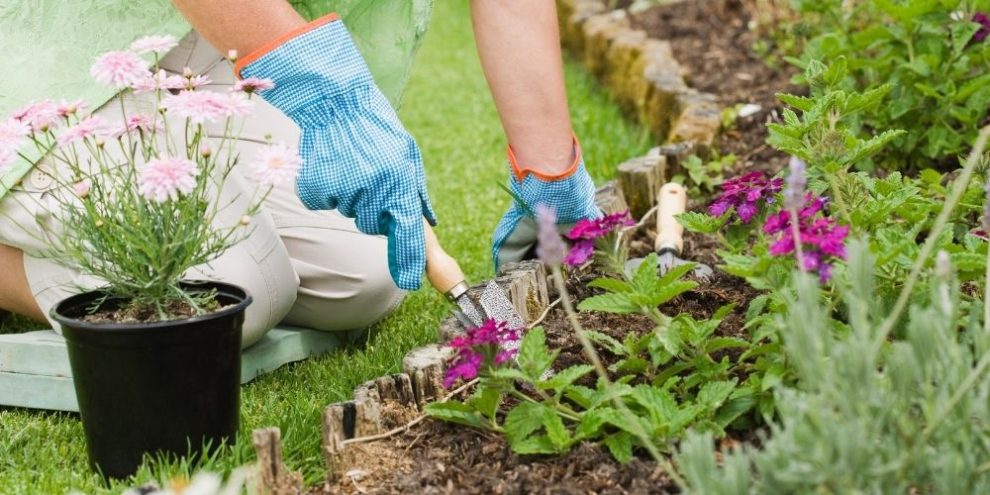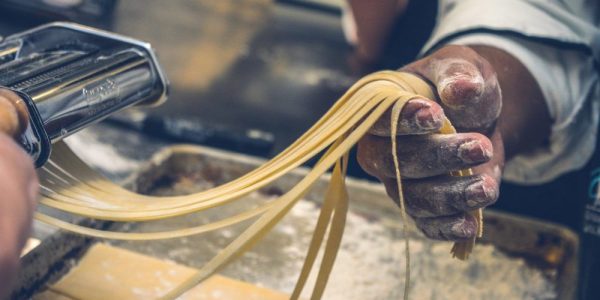
This Barrie 360 content is brought to you by United Lumber Home Hardware
Maintaining a beautiful year-round garden in Barrie can be difficult. Especially when it’s snow-covered 6 months out of the year.
The good news is there are ways to bring your garden to life, even when it’s not prime growing season.
So, here are 7 maintenance tips to make sure your garden looks outstanding year-round.
1. Plant For All Seasons
The first year-round garden maintenance tip is to make sure you have plants for every season throughout your garden. That way as the seasons change, your garden will continue to be colourful and lively.
To help you choose the best plants, you’ll want to know your hardiness zone (also called gardening or growing zones). Hardiness zones are geographic areas defined by their average low temperatures.
Plants rated for your zone are more likely to survive where you live. Zones also help us determine frost dates more accurately.
In Barrie, our growing zone is 5 because we have an average low temperature of -23°C to -28°C. Our first frost date is mid-October and our last frost date is mid-April.
Here are some great Zone 5 plant options for each season.
Spring
The most common springtime flowers are bulb flowers. They get planted in the fall and then bloom in the spring. Some flowers even grow before the snow has completely thawed.
This means you can enjoy your garden as soon as spring hits, without gardening in the low temperatures.
If you didn’t plant bulbs in your garden last fall, plan to plant them this year so that you can enjoy them next spring. Popular spring bulbs include crocuses, tulips, alliums, hyacinths and daffodils.
Another option is perennials. These are cold-hardy plants that will grow for two or more years. Spring blooming perennials include bleeding hearts, columbine, hellebore, pigsqueak and moss phlox.
Annuals are plants that only have a single growing season. You can plant seeds in early spring or container plants in late spring. Popular spring annuals include wallflower, diascia, snapdragon, viola and dianthus.
Shrubs are an excellent way to fill out large gardens. Popular Zone 5 spring blooming shrubs include flowering quince, forsythia and spring heath.
Summer
You can plant some summer bulbs in the fall. This includes astiac lilies, hardy gladiolus and bearded irises. But you’ll have to plant most summer bulbs in the spring when soil temperatures are around 13°C. Dahlias, lilies, gladiolas, begonias (actually a tuber) and caladiums are great non-hardy summer bulbs.
You can plant summer annuals in late spring or early summer, when the nights are warmer. Good options include impatiens, petunias, geraniums, marigolds and zinnias.
If you want a garden that requires less planting every year, choose summer perennials. Consider planting daylilies, coneflowers, delphiniums, black eyed Susans and bee balm.
Popular summer blooming shrubs are foxtail myrtle, bottle brush and hydrangeas.
RELATED: 7 flowers that attract honey bees ...
Fall
If you want fall perennials to add colour to your garden, plant some chrysanthemums, hostas, goldenrod and cardinal flowers. Hardy ornamental grasses are also great for adding colour and texture.
For shrubs with great fall colour, consider sumac, butterfly bush, witch hazel or dogwood. Firethorn, coralberry and snowberry are also good choices thanks to their colourful fall berries.
If you want to add colour with some popular fall annuals in your garden, try:
- Pansies
- Croton
- Aster
- Purple fountain grass
- Ornamental peppers
Many of these are tender perennials that can’t handle the cold winters of Zone 5. If you’re lucky, though, they may return the following year.
Winter
Winter is when things get a bit more complicated. Some flowers like snowdrops and hellebores peak through in late winter, early spring. Crocus in snow, as the name suggests, can even grow through the snow.
While there aren’t any flowers that will bloom in the dead of winter, there are some colourful alternatives. This includes plants like winterberry. This holly shrub has bright red berries that stick around in cold temperatures. Red twig dogwood is also a good choice. While it won’t hold any foliage over the winter, its branches stay a vibrant red. And of course, there are classic evergreens that keep your property green and lush any time of year.
You may also want to leave some dead plants in your garden for birds and other animals to use for shelter and seeds. They’ll also add interest to your winter landscape during a fresh snowfall. Some popular plants to leave alone are: lavender, asters, verbena, cornflowers, grasses, old man’s beard, salvia and thistle.
2. Plant At The Right Time
To make sure your garden is colourful year round, you need to plant each flower, tree and shrub at the right time. Many bulbs need to be planted in the fall to ensure a proper bloom the following season.
Other bulbs like gladiolus, dahlias, and begonias need to be planted in spring for a summer bloom. Unlike hardy bulbs that are planted before winter, you’ll need to remove and store these bulbs inside over winter. If stored properly, they can be replanted the next year.
Seeds can be started inside or planted directly into the ground. You can also purchase container plants that have already sprouted, or even bloomed, to transplant into your beds. But the exact time you should start planting will depend on the plant.
That means there’s a lot of planning involved. Without planning, you could end up having an entire season without flowers. Either that or you’ll have to invest a lot of time and money in annual plants.
3. Try Bulb Layering So Your Garden Is Always Full
Some gardners recommend bulb layering for a stunning year round garden. This involves layering later blooming bulbs under early blooming bulbs. While this method can take some planning, implementation is fairly straight forward.
When the cooler temperature of fall hits you want to dig a small trench that’s 40 cm deep. Add about 15 cm of soil mix to the bottom of the dug out. Next plant hardy summer bulbs. Lilies are a great choice but there are other options as well.
In small gardens choose a single summer blooming bulb. In a large garden you can place alternating bulbs 20 cm apart, such as:
- Hardy gladiolus (early summer blooms)
- Louisiana iris (mid summer blooms)
- Oriental lily (late summer blooms)
Place 8 cm of soil on top of the bulbs and then lay down spring blooming bulbs 10 cm apart. Daffodils, alliums and hyacinths are all good choices.
Cover these bulbs with 8 cm of soil and then plant early blooming tulips, such as triumphs.
Cover in 8 cm of soil and then finish off with crocuses and snowdrops. These will all be the first to grow once spring hits. Cover with the remaining soil.
In late August the following year, plant late summer and fall bulbs 12 cm deep. This may include autumn crocuses and naked ladies.
4. Add Some Mulch
Mulch is an important part of proper garden maintenance. No matter what time of year it is, mulch is great for your plants. In the warm weather, mulch improves moisture retention, reduces weeds and protects roots. It can also prevent plant diseases and improve soil structure.
In colder months it acts as an insulator. As the snow thaws, it will also prevent new growth during unseasonably warm days.
There are many inorganic mulches that don’t need to be regularly replaced, but generally organic is better. That’s because organic mulch breaks down and adds nutrients to your garden.
Ideally you want 2 to 3 inches of organic mulch in your gardens. Too much will stop water and oxygen from getting to the roots. You also want to avoid piling it up around trunks. Keep it 6 inches away from the base of trees and shrubs to avoid bark rot.
You’ll want to apply mulch in the late spring or early summer. Doing it too early can cause the ground to warm up slower, slowing plant growth. As the mulch breaks down and incorporates into the soil during the year, add more to the surface.
You can also mulch in the late fall or early winter to stop plants from shifting and to protect roots. Again, you don’t want to mulch too soon as it could delay soil cooling and disrupt dormancy. Wait until the soil has started to harden before adding the mulch.
RELATED: Ideas, tips & inspiration for your next home renovation or DIY project ...
5. Take Advantage Of Container Gardening
Container gardens are a great way to achieve year-round colour. That’s because a container garden is low maintenance and can be easily updated every season.
One method for year-round container gardening is to plant perennials from each season in one container. As one season’s flowers die off, the next season’s will bloom. Container gardening is also a good opportunity to experiment with bulb layering. Alternatively, you can plant seasonal annuals and swap them out as the weather changes.
In the winter, you can use sprigs and branches to create a floral arrangement or swap out summer plants for winter shrubs.
Seasonal hanging plants are also a great container gardening option.
6. Have A Seasonal Garden Maintenance Checklist
One of the most important steps you can take when maintaining your garden is researching how to care for each plant. This will ensure they’re getting enough water and sun and that you plant them at the right time.
There are some other garden maintenance tasks you should do every season as well.
Spring
In the spring, you’ll want to:
- Trim dead leaves
- Cut down stems that were left over winter
- Trim back shrubs
- Clean up debris and leaves
- Weed the garden
- Remove winter mulch
- Add fresh mulch once the ground has begun warming up
Summer
In the summer, your focus is on watering and weeding but you also want to:
- Deadhead old flowers so new blooms can take their place
- Prune summer flowering shrubs once they stop blooming
- Remove/move any shrubs or perennials plants that have been around for a few years and aren’t prospering where they are
Fall
In the fall, you want to:
- Remove summer-flowering bulbs that can’t withstand the cold weather
- Trim plants that need fall care
- Prune fall-flowering shrubs once they’re finished blooming
- Water and fertilize
- Add burlap or windscreens to protect plants that need it,
- Leave dead leaves and flowers because they’re great for the soil
Winter
In winter, you can:
- Research new plants to add the following year
- Learn more information on plants that didn’t do well this year
- Start growing from seeds - especially good for veggies if you want an early harvest
- Make a plan for bulb layering next fall
7. Make Garden Tool Maintenance A Priority
To maintain a beautiful garden, you should have dependable tools. To make sure they last as long as possible, you need to take care of them. Part of that is making sure your garden tools get regular maintenance.
When using your tools throughout the season, rinse off the dirt after every use and dry thoroughly. You can towel dry them, but you can also air dry them. You also want to return tools to the shed when not in use. If you leave them out in the elements, they can wear out faster.
If you want to go the extra mile, wipe tools down with a plant based oil to help prevent rust. You can even use oil on wooden handles to keep them from drying out. Many gardeners also recommend keeping spades and trowels stored in sand soaked with plant based oils. This will also help to keep tools conditioned.
If wooden handles begin to splinter, give them a light sanding then condition with oil. You also want to regularly sharpen pruners, shear, scissors, knives, hoes and other bladed tools.
If your tools get exposed to diseased plants or pesty soil, wipe them down with rubbing alcohol or disinfecting wipes to avoid spread. For bigger or more intricate tools, you can also soak them in water with bleach. Just make sure to rinse them off well when they have finished soaking.
When your gardening season is done, be sure there’s no soil, water or debris on your tools. This can get stuck on and wear your tools down over winter.
Maintaining an outstanding year-round garden can be tricky. But if you take the time to plan, you can make sure your yard looks fresh and alive all year long.













